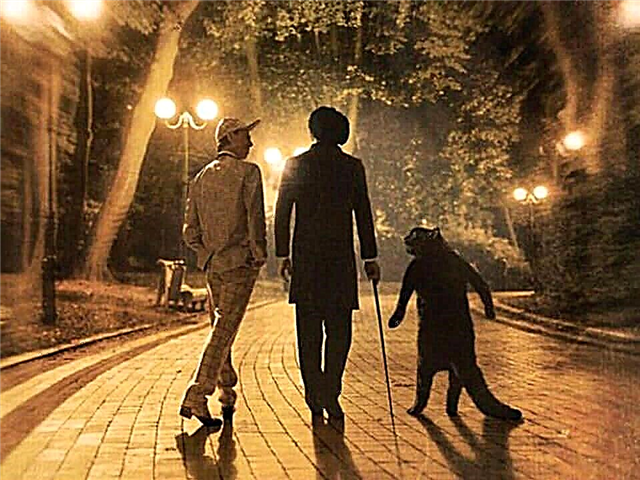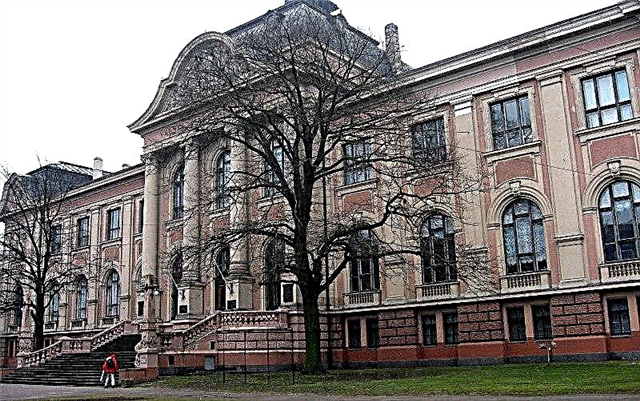The issue of the ecology of our planet, suffering from the results of aggressive human progress, today affects almost everyone. Only an attentive and careful attitude to the corners of the pristine nature in which our smaller brothers live can allow a person to feel like a part of the ecosystem longer. Today, each country strives to preserve and enhance its territories, where nature still occupies a dominant place in front of man. There are many national parks and reserves, and each is unique in its own way. One of them is located in Croatia.

History
The first written legend about Plitvice Lakes was recorded at the end of the 18th century. Dominikan Vukasovich, a priest from Otočac, spoke about this place, as about mysterious, impassable places of untold beauty. Ancient legends attributed bad glory to these lakes and the forest surrounding them. It is not for nothing that on the maps of the 17th - 18th centuries this area was called only the Devil's Garden. Today historians have managed to explain the attitude of ancestors to the impenetrable forest, as to a destructive place.
Hidden in the very heart of the Dinaric Highlands, the lakes have been a bone of contention for neighboring rulers for many centuries. The Hungarians, Austrians and Turks fought for these territories. At the end of the 17th century, the border of the Austrian Empire was consolidated here, and the territories where the national park is located today became a cordon from the Ottoman raids. Defending their land, many soldiers and civilians laid down their heads or disappeared without a trace in the impenetrable forests.

The end of the last century in these places was also marked by vague, bloody events. During the Yugoslav conflict, the majority of the population were Serbs, and a road between Serbian communities ran along the Plitvice Lakes. In a sparsely populated area, control over the road of "life" was important to both belligerents. The spring of 1991 went down in the history of the country as the beginning of the Yugoslav War, and March 31 of this year is now called the Plitvice Bloody Easter. And again, the Dinaric Highlands became a real arena of hostilities.

Park today
The daring was over. At present, the territory of the park has been cleared of mines and the entire infrastructure has been fully restored. The national park, which received its status in 1949 and was taken under the wing of UNESCO in 1979, is again visited by thousands of tourists today.

Nature for this place is not stingy with fantasy and magic. The mountainous terrain allowed 16 lakes to form cascades of flowing crystal water, carrying the music of waterfalls around the area and creating clouds of wet cape. The nearby mountains are donors, constantly replenishing water supplies in the unique lakes. And limestone rocks with ever-moving water help the sculptor-nature to sculpt intricate caves and backwaters. The color of the water will amaze even any skeptic: blue, green, dark blue. You will never guess which palette of the water surface will open to your eyes when you approach the next body of water.

Legend
An old legend, probably dating back to the times of paganism, tells that at one time, these places suffered from severe drought. The locals turned to the Black Queen, the evil mistress of the area, for help. She decided to do a good deed and began to ask the Gods for mercy for her land. The gods drove black clouds to the mountains, and a violent downpour burst out, filling the stone bowls with divine water.

What can be seen in the park
Seeing the panorama of the national park, opening from the observation platforms, any legends seem to be a reality. The Croats themselves call Plitvice Lakes their “wonder of the world”. And for good reason. This is the only place in Europe where relict forests still turn green and new waterfalls are born every year. There are “miniature Niagaras” here, and secluded corners reminiscent of Japanese gardens, and a dense carpet of moss, which, surprisingly, plays a special role in the formation of the landscape.

Visiting rules
Plitvice covers an area of about 30,000 hectares. Most of the park is set aside for the protected area, where entry to tourists is prohibited, and a third of the park is given for walking routes of visitors. The territory of the walking area of the reserve is well organized. Firstly, there are several entrances, allowing you to start your walk from different directions of the world. Secondly, all paths allowed for passage are clad in wooden platforms. Thirdly, before entering the protected area, everyone will be offered a map showing the routes and the schedule of the ferry (pleasure boat on electric traction) plying on the large lake. And finally, for the convenience of tourists and the opportunity to cover most of the park, a tourist bus (eco-car) moves parallel to the main routes. Therefore, after following one of the routes on foot, the return journey will be easier, with a breeze in environmentally friendly transport.

A tourist route
For those who are more adventurous, there is a special route among the Plitvice Lakes. Medvjeak is a mountain range that includes three peaks, each of which is about 800 meters high, attracts hardy daredevils. The ascent to the peaks can be carried out along two paths, and the time is spent about 3 hours. The further you move away from the main tourist routes of the park, the more you feel that nature is the mistress here. Therefore, tourists always go on distant routes accompanied by guides.

Visitors shouldn't forget that Plitvice Lakes is a protected area. The bans apply to almost everything that one would expect from a tourist. You cannot swim and even just enter the water, make fires, litter and walk in the wild forest, feed their inhabitants in the lakes. Here you can only walk, watch and breathe. Believe me, this will be enough for you. Every step, every turn of the head amazes me from the surrounding "interior".
When the sun begins to decline, wild animals become the masters of these places, whose peace in the daytime is partly disturbed by tourists. In the midst of the silence, you can hear the flapping of the stork's wings and the hooting of owls. The legends about the owner of these places, the bear, give a special flavor to the stories of the guides. There is a belief that the existence of lakes is predetermined as long as bears live here. Brown giants really feel peace and safety here. But they run in remote areas of the reserve, and only bold biologists and ecologists who delve deeper into the territory of impassable mountain slopes have met with them. The fauna of Plitvice is very rich in the population of wolves, foxes, deer, wild boars, a variety of species of birds and bats. The real indigenous people of these places.

Park opening hours
Tourist routes are only a small fraction of the park. Most of it is a reserved "country", into which the entrance is open only to initiates: gamekeepers and biologists.
The national park is open to visitors all year round:
- Summer period - from 6:00 to 20:00
- Spring / autumn - from 8:00 to 18:00
- Winter period - from 10:00 to 16:00

Best time to visit
The reserve is covered with snow from December to February. Especially a lot of snow falls on the days of January. At this time of year, of course, there are not as many visitors as in summer. But the rumor about the fabulous winter landscapes of Plitvice Lakes has already spread all over the world, and many tourists these days choose Croatia for their winter holidays.
A walk in a national park in winter is not only a journey through a winter forest. These are striking pictures of a sleeping snow-white forest, wrapped in a snow blanket, waterfalls bound by an ice shell and the air ringing from silence. There is a ski track along the route paths in winter.Not far from the park, in Mukinje, there is a winter mini-resort for skiers. It is ideal for family vacations and unattractive for extreme people. The slope of the mountain is relatively gentle here, so the 500-meter track is perfect for beginners and for teaching children the basics of skiing.

In warm seasons, the weather in these places is very changeable. The reason for this is the location of the park. It is located just on the border of the climatic zones: continental and coastal. Therefore, the winds constantly bring humid air here from the sea. On one day, the weather can change several times: from pouring rain to the rainbow sun.
Experienced tourists, planning their route to where the vagaries of the weather are unpredictable, be sure to take raincoats and umbrellas with them. Since the mountains can always unexpectedly gather clouds around them, this advice is also relevant for walks in the Plitvice Lakes region.

Ticket price
The entrance to the park is paid, although you will not see any checkpoints or fences here. Rather, it is material assistance for the development of the security zone, than an opportunity to get there only for money. The amount of such "help" varies from season to season: from 80 kuna in winter, to 110 kuna from spring to autumn. For guests of nearby hotels and guest houses, there are one-time unlimited tickets, which will only require a change in the date of the visit by the hotel administrator. Free admission to the park is allowed for children up to 7 years old, visitors from 7 to 18 years old, students and tourist groups have various discounts.
To accommodate visitors who have arrived in Plitvice with an overnight stay or for several days, many small hotels (3 * and 2 *) and two campgrounds, private houses and guesthouses, mainly aimed at budget tourists, have been opened on the territory of the park itself and its surroundings.
There are many more unique lakes in the world. Be sure to take some time and read the article about Lake Nakuru in Kenya, where you can see a million pink flamingos. The picture is simply indescribable.

How to get there
The Plitvice Lakes Nature Reserve is located along the D1 motorway connecting the Croatian capital Zagreb with the city of Zadar (then it goes to South Dalmatia, to the cities of Split and Dubrovnik). The highway itself runs near two entrances to the park, where there are paid parking lots for cars and tourist buses. The road is not short: both from Zagreb and from Zadar the distance is about 200 km. But the quality of the road is good, there are no traffic jams, so this distance will not seem tiresome. Of course, a more comfortable journey is independent, by car, when you can make a stop as needed and leave at a time convenient for you. But the movement of public transport in this direction is well organized.
There are many regular buses from Zagreb to this direction, but the fastest way is the Croatian Croatia Bus, which departs from the city bus station and has the least number of stops. The cost of a ticket to Plitvice ranges from $ 16 to $ 20. There are fewer regular buses from Zadar, their schedule varies from time to year, and the travel time and distance to the stop you need will be slightly less than from the capital.
Can't decide what to choose: Croatia or Bulgaria? Read our article.











